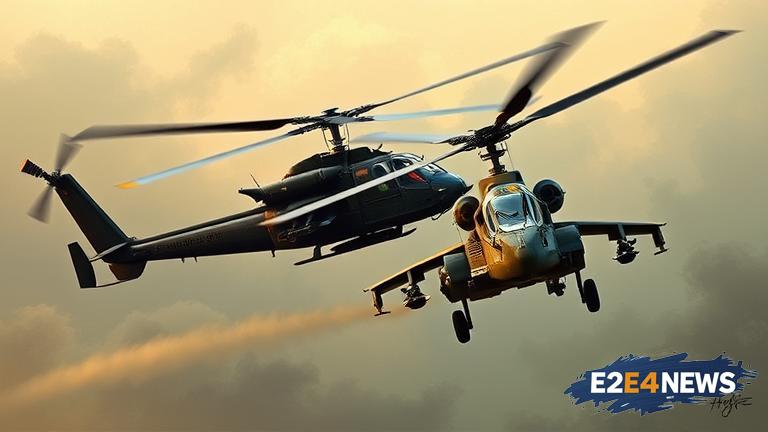In 2010, the Indian military was faced with a critical decision regarding the procurement of new attack helicopters. The two main contenders were the Russian Mi-28NE Night Hunter and the American Apache. The Mi-28NE, a derivative of the Mi-28 Havoc, boasted impressive firepower and maneuverability, making it a formidable opponent on the battlefield. On the other hand, the Apache, with its advanced avionics and precision-guided munitions, had already proven itself in various combat scenarios around the world. The Indian Air Force (IAF) had been seeking to replace its aging fleet of Mi-25 and Mi-35 helicopters, and the competition between the Mi-28NE and Apache was fierce. The Russian manufacturer, Rosoboronexport, had been aggressively marketing the Mi-28NE, highlighting its capabilities and competitive pricing. Meanwhile, the American manufacturer, Boeing, was touting the Apache’s advanced technology and interoperability with other US-made systems. The IAF had conducted extensive trials of both helicopters, evaluating their performance in various environments and scenarios. The Mi-28NE had demonstrated its ability to operate in high-altitude and hot conditions, making it an attractive option for India’s diverse terrain. However, the Apache’s advanced sensors and targeting systems gave it a significant edge in terms of precision and accuracy. The Indian government was also considering the geopolitical implications of the procurement, with the US and Russia vying for influence in the region. Ultimately, the IAF selected the Apache, citing its superior technology and performance. The decision was seen as a significant blow to Russia’s defense export industry, which had been hoping to secure a major contract with India. The Apache’s selection also marked a shift in India’s defense procurement strategy, with the country increasingly looking to the US for advanced military technology. The Mi-28NE, despite its impressive capabilities, was unable to overcome the Apache’s advantages in terms of technology and interoperability. The competition between the two helicopters had been intense, with both manufacturers engaging in aggressive marketing and lobbying efforts. In the end, the IAF’s decision was based on a thorough evaluation of the two helicopters’ performance, capabilities, and long-term support and maintenance costs. The Apache’s selection was seen as a significant upgrade to India’s attack helicopter fleet, providing the IAF with a advanced and capable platform for a range of missions. The Mi-28NE, while not selected by India, remains a formidable attack helicopter with a strong reputation for its firepower and maneuverability. The 2010 competition between the Mi-28NE and Apache marked an important milestone in India’s defense procurement history, highlighting the country’s growing demand for advanced military technology and its increasing willingness to engage with international manufacturers. The selection of the Apache also underscored the importance of interoperability and long-term support and maintenance costs in defense procurement decisions. As India continues to modernize its military, the country is likely to face similar decisions in the future, pitting different manufacturers and technologies against each other in the pursuit of advanced capabilities. The IAF’s experience with the Apache is likely to inform its future procurement decisions, with the service seeking to leverage the benefits of advanced technology and interoperability to enhance its operational effectiveness. The 2010 competition between the Mi-28NE and Apache serves as a reminder of the complex and often contentious nature of defense procurement, where multiple factors and stakeholders must be carefully considered in order to make an informed decision. The Indian government’s decision to select the Apache was likely influenced by a range of factors, including the helicopter’s performance, capabilities, and long-term support and maintenance costs, as well as geopolitical considerations and the country’s growing relationship with the US. The Mi-28NE, while not selected by India, remains an important part of Russia’s defense export industry, with the helicopter continuing to be marketed and sold to countries around the world. The 2010 competition between the Mi-28NE and Apache highlights the importance of effective marketing and lobbying efforts in defense procurement, with both manufacturers engaging in aggressive campaigns to promote their respective helicopters. The selection of the Apache by the IAF marked a significant milestone in the country’s defense procurement history, underscoring the importance of advanced technology and interoperability in modern military operations.
